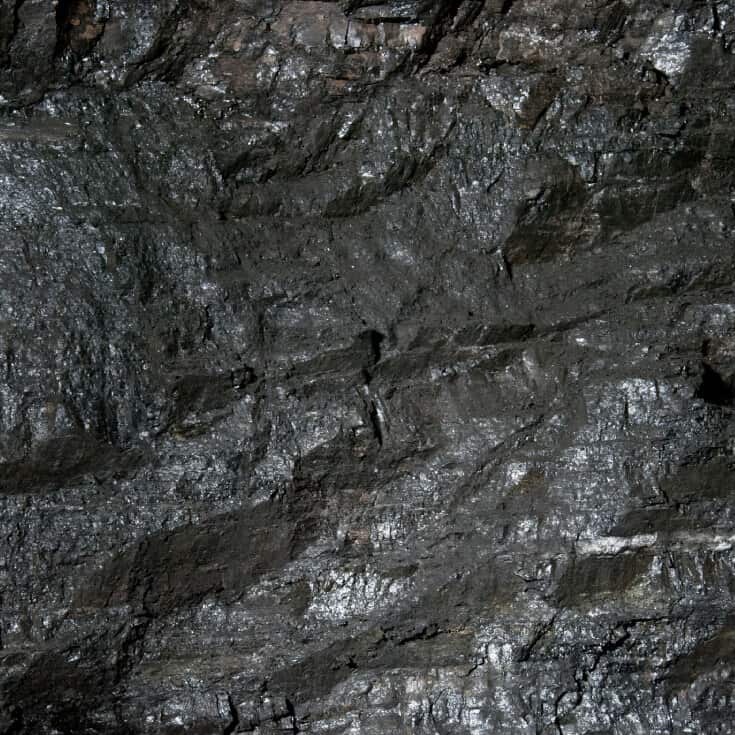Shilajit (also spelled as Shilajeet, Silajit, or Shilajatu and known as Asphaltum in English) is mineral pitch used in ayurveda as health supplement. Shilajeet is an exudate and natural substance collected from Himalayans Mountains present between India and Nepal. In ayurveda, Shilajit is a famous RASAYAN DRAVYA (rejuvenative remedy) and aphrodisiac agent. The principle component in Shilajit is fulvic acid, which provides it anti-anxiety, anti-stress and anti-inflammatory properties.
According to Bhavprakash Nighantu, Shilajit is a Rasayana (rejuvenating agent). It is indicated in urinary disorders, kidney stones, glycosuria, dysuria, phthisis, breathing disorders, piles, anemia, epilepsy, mental disorders, edema, skin diseases and worm infestation.
Shilajit is useful in several diseases of brain, nerves, kidneys, bladder, reproductive organs and endocrine glands. Especially, Shilajeet has influence on thyroid gland and improves its functions. Due to this reason, its unique preparation named as Chandraprabha Vati is used in thyroid gland disorders and throat cancer.
Chemical Composition
The chemical composition of Shilajit (Asphaltum) is very complex. It is a phyto-complex, which contains HUMIC SUBSTANCES (HS) like FULVIC ACID, HUMINS and HUMIC ACIDS. It also contains selenium and other minerals in traces. In addition to this, Shilajit also contains small amount of dibenzo-α-pyrones (metabolites derived from plants, fungi, animal feces or mycobionts). Mainly, FULVIC ACID content is responsible for the therapeutic value of the Shilajit.

Medicinal Properties
Shilajit has following therapeutic properties.
Primary Actions
- Alterative
- Rejuvenative agent
- Aphrodisiac
- Spermatogenic
- Nervine tonic
- Heart tonic
- General Supplement
- Anxiolytic
- Antilithiatic (stops formation of stones in kidneys)
- Anti-inflammatory
- Antipyretic (also reduces and prevents restlessness and body aches in fever)
- Anti-obesity
- Anti-diabetic
- Diuretic (action reported only first one to three weeks, there after diuretic effect becomes diminished)
- Antihyperlipidemic
- Cardioprotective
Secondary Actions
- Appetizer
- Digestive stimulant
- Carminative
- Mild laxative
- Anthelmintic
- Blood detoxifier
- Bio-cleanser
- Antiseptic (external application) – rarely used
- Anodyne
Ayurvedic Properties
| Taste – RASA | Pungent, Bitter & Astringent |
| After taste – ANU-RASA | Astringent |
| Main Quality – GUNA | Light in digestion, Dry |
| Potency – VIRYA | Hot |
| Resultant – VIPAKA | Pungent |
| Therapeutic Effect – PRABHAVA | Rejuvenation & Supplement |
| DOSHA KARMA (Effect on Humors) | Pacifies KAPHA & VATA and Detoxifies PITTA |
| Effects on Organs | Nerves, Kidneys, Bladder, Reproductive organs, Endocrine Glands (especially Thyroid Gland) |
Therapeutic Indications
- Stress disorders (frequently used)
- Anxiety
- Epilepsy
- Alzheimer’s disease
- High cholesterol levels
- Atherosclerosis
- Anemia (as supportive remedy)
- Congestive heart failure (as supportive remedy)
- Breathing trouble or cough especially due to physical weakness or excessive physical exertion
- Mild abdominal pain
- Chronic Constipation
- Chronic problem of Gas or flatulence
- Rheumatoid arthritis
- Osteoarthritis
- Chronic dysmenorrhea or pelvic pain
- Frequent urination
- Leucorrhea
- Prostate enlargement
- Infertility due to oligospermia
Benefits & Uses
Shilajit is generally useful as health tonic or traditional nutritional supplement. In addition to its supplementary uses, it is also beneficial for treating a variety of diseases. In ayurveda, it is widely used for its therapeutic value.
Stress disorders & Anxiety
Shilajit has significant anxiolytic property and anti stress characteristic. Due to this, it is highly beneficial in all types of stress disorders and anxiety. Shilajit contains fulvic acid, which is responsible anxiolytic and antidepressant effects of Shilajeet. In stress disorders, the following Shilajit combinations help.
VATA PRAKIRTI (body type)
PITTA PRAKIRTI (body type)
| Remedies | Dosage (Two times) |
| Shilajit | 500 mg |
| Gotu Kola (Centella asiatica) | 1000 mg |
| Shankhpushpi (Convolvulus Pluricaulis) | 1000 mg |
| Petha (Ash Gourd) (Benincasa hispida) – Dried Powder | 500 mg |
KAPHA PRAKIRTI (body type)
Alzheimer’s disease
Shilajit with other nervine herbs can help in Alzheimer’s disease. The above herbs and combinations also help patients with Alzheimer’s disease under same body type rules. These combinations prevent further changes in behavior and personality and treat all symptoms including anxiety, depression, delusions, mood swings, aggressiveness and irritability. It requires choosing right combination of herbs with Shilajit for beneficial results. Other herbs may also help along with Shilajeet.
Obesity & Overweight
Shilajit is processed with Triphala Decoction to purify it and make consumable for human. This process also increases its anti-obesity characteristics.
According to clinical trial published in Journal of Ethno-pharmacology (1990), 3 months therapy with Shilajit significantly decreases skin fold thickness and circumferences of hip and waist. The effects of Shilajit are also observed on total cholesterol and triglyceride levels in the blood. In this study, no side effects were found during 3 months therapy with Shilajit. (1)
Shilajit can be included in weight loss supplements. Shilajit can help obese or overweight people in three ways:
- Shilajit provides nutritional support in weight loss and prevents loss of energy during any weight loss program
- It also provides support to metabolism and conversion of cholesterol into the bile, which may assist people with obesity to decrease the risk of heart diseases.
- Shilajit also helps prevent re-gain of the body weight that you have lost during any weight loss program or weight loss diet.
Dyslipidemia (hyperlipidemia & hypercholesterolemia)
Indicated in High Cholesterol & Triglyceride Levels
Shilajit has cardioprotective action. It reduces serum levels of total cholesterol, triglycerides, LDL & VLDL Cholesterols and improves the level of good cholesterol (HDL). According to study, 2 grams Shilajit (containing 6.61% Fulvic Acid) per day reduces LDL cholesterol by 22.6%, VLDL cholesterol by 20.6% and triglycerides by 21.7%. Furthermore, it increases good cholesterol (HDL) by 5.8% after 45 days. (2)
However, strong scientific evidences are not available for Shilajit effects in heart diseases, but it is effective in combination therapy as used in ayurveda. For lowering cholesterol level, it can be used along with Trikatu, Arjuna, Guggul, Pushkarmool (Inula Racemosa) and Tulsi (Ocimum Tenuifolium or Ocimum Sanctum).
Atherosclerosis
Shilajit is reported beneficial for people with atherosclerosis. Current studies show low-grade inflammation in the blood vessels is underlying cause and not the high lipids in the blood. Deposition of plaque only occurs when inflammatory lesion is present in the arteries.
Shilajit acts as anti-inflammatory and reduces this inflammation in the blood vessels. It also reduces cholesterol and lipids levels, which further prevents plaque deposition. However, these effects are only observable after 3 to 6 months therapy with Shilajit. It also reduces thickness and stiffness of blood vessels and provides more flexibility and elasticity. For enhance its action, Shilajit is used with following herbs.
- Arjuna (Terminalia Arjuna)
- Guggul
- Pushkarmool (Inula Racemosa)
- Trikatu Churna
Breathing Trouble
Shilajit does not have similar action as other herbs used in breathing troubles have. It may not dilate respiratory tract or provides instant relief in breathing difficulties. It only works when person has breathing difficulties due to physical weakness or frequent excessive physical exertion. Shilajeet provides strength to respiratory muscles and reduces weakness. It makes person capable for physical exertion and reduces breathing troubles. It requires a long-term use at least for 2 to 3 months to get these benefits.
In asthmatic patients, it has similar benefits. It reduces frequency of asthma attacks and helps in obstinate asthma cases. For effective results, the following herbs are beneficial with Shilajit.
- Pushkarmool (Inula Racemosa)
- Ashwagandha (Withania Somnifera)
Chronic Constipation
In chronic constipation, intestines become weak. Due to this, peristaltic movements also decrease. Many patients continue taking laxatives, which affects adversely and lead to chronic and obstinate constipation. In such type of constipation, patient actually requires remedies, which strengthen the intestines, restores the natural peristaltic movements and improves bile secretion from the liver and gall bladder.
Shilajit is also liver tonic, but we do not know if it increases bile secretion from the liver. Further research is required on this topic. However, Shilajit provides strength to the intestines and improves natural peristaltic movements, which help passing stool with ease. These effects become visible after two to three weeks of shilajit therapy. Shilajeet is also helpful in chronic cases of intestinal gas, flatulence, dull type abdominal pain and abdominal heaviness after meal.
Arthritic Disorders
Shilajit has anti-inflammatory and anodyne action, which are more visible in joint and muscle disorders. It reduces pedal edema and mild pain. However, it may not alone effective in all cases of arthritis. Shilajeet is less effective in rheumatoid arthritis, but it is effective in osteoarthritis.
In osteoarthritis, it provides nutritional support to the joints and strengthens them. It reduces inflammation and joint pain. However, these effects of shilajit are not comparable with Boswellia Serrata, which is more potent and effective, but it does provide better support to the joints due to its supplemental property when used along with Boswellia Serrata and Guggulu compounds.
Chronic Dysmenorrhea or Pelvic Pain
However, shilajit does not have antispasmodic action, but it provides strengthen to the uterus and pelvic floor in women. It helps preventing all uterine diseases including dysmenorrhea or chronic pelvic pain. It is effective only in chronic cases. In acute cases, patient requires some other ayurvedic remedies.
Frequent Urination
However, shilajit initially increases frequency of urination, but it is only for a short period. After that, it corrects and restores natural urination process, which helps combating with frequent urination.
High Blood Pressure in Alcoholism
Everything in excess is bad. It is also applicable for heavy alcohol drinkers. Taking too much alcohol increases blood pressure or increases the risk of hypertension in the future. In case, blood pressure is raised due to excessive intake of alcohol, Shilajit or Chandraprabha Vati is good remedy in this condition.
Diabetes Mellitus
Shilajit, a mineral pitch, helps patients with diabetes. However, the claims in ancient texts are not seen with Shilajit available nowadays, but still it is effective for the prevention of strength, reducing the diabetic symptoms, treating diabetic complications and boosting the pancreas function and insulin sensitivity in the cells.
Shilajit is commonly used to reduce frequent urination occurring due to diabetes mellitus. It also prevents leakage of the sugar and albumin in the urine and effectively helps to treat mild to moderate type of glycosuria and proteinuria.
Shilajit also provides nutritional support in diabetes, which improves physical and mental well-being.
Antioxidant Action
Delay aging & Maintain Optimum Health
Shilajit has antioxidant action, which is attributed to its active constituents such as benzopyrones and fulvic acid. Shilajit supplementation significantly increases the level of antioxidants in the body. Antioxidants helps to balance the free radicals and prevents oxidation in the body, which ultimately maintains optimum health and delay aging.
The significant increase is observed in the serum level of antioxidants (Vitamin C, Vitamin E and superoxide dismutase) with Shilajit supplementation for 45 days. Furthermore, fulvic acid in the Shilajit is an active constituent in it, which acts as electron donors & acceptors (bi-directional super antioxidant). Thus, it maintains the balance and reduces free radicals. (3, 4)
Tachycardia and Heart Weakness
The low dosage of Shilajit has the negative chronotropic effect that means it decreases the heart rate. However, the high dosage of Shilajit has the positive chronotropic effect that means it increases heart rate. The mechanism of these effects is yet unknown. (5)
Shilajit has cardioprotective effects and it provides the strength to the heart and regulates the heartbeat. A low dosage i.e. 250 mg twice daily is recommendable for treating tachycardia. It also improves the myocardial strength and prevents heart diseases, so indicated in cardiac weakness.
Precaution: The effect of Shilajit is dose-dependent. Patient with tachycardia should not take Shilajit more than 1000 mg per day to prevent its negative effects. This dosage is likely to exert a positive chronotropic effect, which will increase the heart rate.
Infertility due to Oligospermia
Shilajit has spermatogenic action. It increases total sperm count and improves sperm motility. (6)
Shilajit treats oligospermia by increasing count and maintaining optimum health of reproductive system. Due to this, it is more famous in men. It also has aphrodisiac action and becomes a crucial ingredient in all men’s supplements.
Piles
In Bhavprakash Nighantu, shilajit is also indicated in the treatment of hemorrhoids (piles). Because it strengthens the blood vessels and restores their optimum health by acting as a Rasayana (rejuvenating agent). It further reduces the increased pressure in the lower rectum and pelvis due to vata pacifying action. The increased pressure in the lower rectum is the major cause of swollen veins (hemorrhoids). So, it acts on the root cause. Thus, it helps to reduce the swelling of the veins and alleviate the symptoms of piles.
Dosage & Administration
| The general dosage of Shilajit is as follows. | |
| Children | 125 to 250 mg * |
| Adults | 250 to 1000 mg * |
| Maximum Possible Dosage | 3 grams Per Day (in divided doses) ** |
| * Twice a day with appropriate adjuvant | |
| ** The maximum possible dosage of Shilajit is a general estimate. | |
| When to Take Shilajit: Empty stomach in the morning & At night before sleep | |
| Adjuvant: Milk is the best adjuvant for Shilajit. | |
The dosage of Shilajit varies according to patient’s age, body weight, diseases, and health conditions. The minimum effective dosage of Shilajit is 125 mg and the maximum dosage is 3 grams per day. Nowadays, the maximum dosage is rarely used because it causes heat sensation in the body. Now, most of the ayurvedic doctors prescribe Shilajit in dosage 250 mg to 500 mg twice a day. For precaution, the maximum dosage of Shilajit should not exceed from 3 grams per day.
How to Take Shilajit
Shilajit should be dissolved in the hot milk by stirring and drink it when warm. Shilajit is also available in capsule form, which is easier to take. The liquid form of Shilajeet should be taken in dosage of 1 to 5 drops adding it in a cup of warm milk.
Recommended Treatment Duration with Shilajit
However, there are no firm recommendations for Shilajit use. It can also be used for long-term basis. Recommendations vary according to the need of the patient. Following recommendations might help to shed some light on the treatment duration with Shilajeet.
| Conditions | Duration of Shilajit use |
| As a General Tonic | 2 to 4 weeks |
| Polyuria or Frequent Urination | 3 to 6 weeks |
| Fatigue & Debility | 4 to 12 weeks |
| Chronic Constipation | 6 to 12 weeks |
| Dyslipidemia | 3 to 6 Months |
| Heart Diseases | 3 to 6 Months or more |
| Chronic Kidney Failure | Lifelong + |
| + Chandraprabha Vati (Shilajit’s formulation) is advisable than Shilajit alone. | |
Safety Profile
Shilajit is LIKELY SAFE in the recommended dosage as explained above in the table and when taken under the supervision of an ayurvedic physician.
Shilajit was studied in the dosage of 2 grams per day, which was given for 45 days to normal human volunteers. There was no significant alteration found in physical parameters and hematological parameters after the study. There were no change observed on the body weight, blood pressure and pulse rate. Similarly, it did not produce any significant change in hemoglobin level and there were no alterations observed in serum level of urea, creatinine, uric acid, proteins, albumin, Alkaline Phosphatase, SGPT, and SGOT. This study suggests Shilajit does not have any harmful effects on the liver and kidneys. However, it improves cardiovascular health by reducing serum triglycerides level, cholesterol, LDL and VLDL Cholesterol levels and improves the HDL Cholesterol (good cholesterol) level. This also suggests it has cardioprotective characteristics. (3)
A human study conducted with the dosage of 200 mg Shilajit daily in men for 3 months observed no morphological changes of RBCs, but it increased Hemoglobin level by 5.2% and WBC count by 6%. In addition, there were no clinically significant toxicological symptoms found. (4)
Caution & Side Effects
There are no side effects reported with this moderate dosage. The higher dosage exceeding 1 gram a day may cause following side effects.
- Excessive Heat Sensation in the body or feeling warming effect
- Burning sensation in feet
- Feeling excess heat in hands and feet
All these side effects occur due to warming effects of Shilajit. These adverse effect can be reduced by taking Shilajit with milk.
Other Possible Side effects
- Increase or decrease in urination: However, this effect is also very rare, but different people report different effects with higher dosage. Some people have reported increase in urination and others have reported decrease in urination. This effect is reported in first and second week. After that, urination becomes normal and natural.
- Allergic reactions: If you are allergic to any compound or ingredient present in Shilajit, you may have itchiness, hives, dizziness and increased heart rate. However, we have mentioned in for precaution, but we have not yet seen this in any of our patient.
FAQs About Shilajit
Does Shilajit Contain Heavy Metals?
Shilajit does not likely to contain heavy metals, but lead may be detected within (up to) permissible limits i.e. 10 parts per billion (10 PPB). This amount is also likely to present in our foodstuff.
Can I take Shilajit with other healthy supplements like multivitamin or calcium?
Taking Shilajit with other supplements (including calcium and multivitamins) is safe, but 3 hours gap should be kept between Shilajit and other supplements for precautionary purposes.
Can diabetic patients take Shilajit?
Yes, diabetic patients can take Shilajit. It is recommended for the management of diabetes mellitus. Read above in the article.





